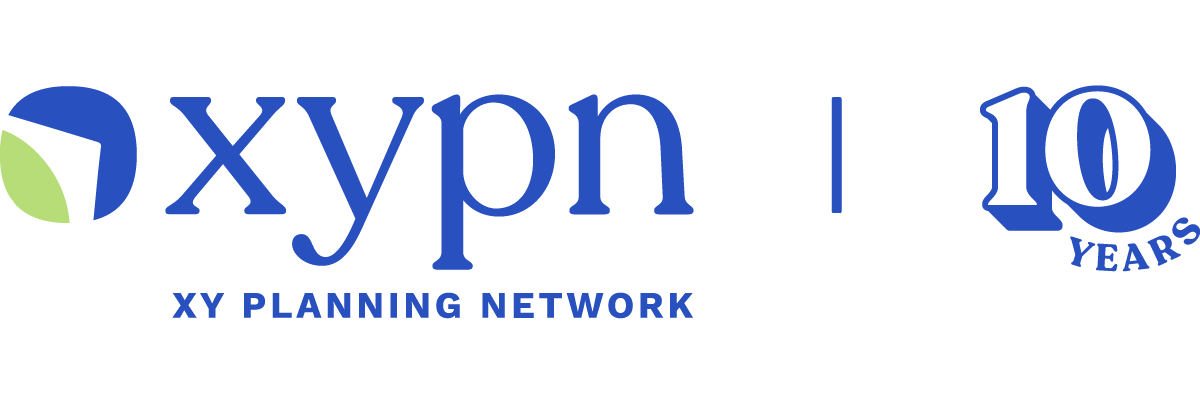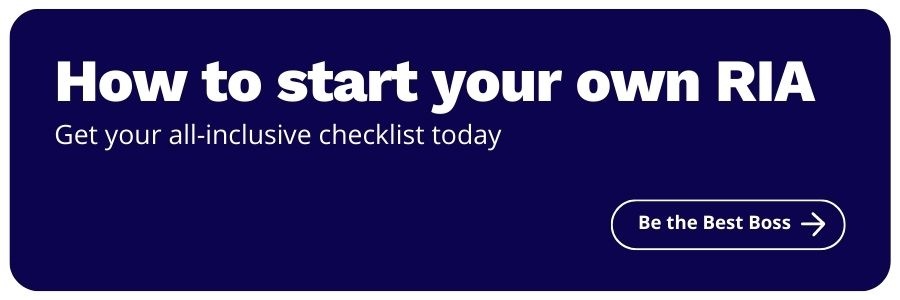How to Create an Email Newsletter for Your Firm
Share this
It’s the start of a new year, which means there is no better time than right now to incorporate an email newsletter into your content marketing plan. But is email marketing really worth the time and effort? The answer is a resounding YES.
When done well, newsletters have a high reward, especially in today’s digital landscape. Email newsletters are an opportunity to nurture relationships with prospective clients just by regularly showing up in their inbox. This may sound simple enough, and yet many firms don’t take advantage of the many benefits of a digital newsletter. Perhaps the process feels too intimidating or perhaps their to-do list already has one too many to-do’s.
Whatever your reason for not having an email newsletter, a new year is the perfect time to make a change. In this blog, I’ll cover the benefits of email newsletters and give you the framework to create a drag-and-drop newsletter, no recreation of the wheel required.
Why You Need An Email Newsletter
Before I explain how to create a successful email newsletter, I might as well start by convincing you a newsletter is actually worth it.
Email newsletters serve you in many ways:
-
They keep prospects informed. This is an opportunity to provide content that will keep your prospects informed on your business and the industry, while providing other important updates and information.
-
They keep your service top of mind. Email newsletters can be used as an addition to your lead nurturing campaigns and can help bridge the gap between a prospect having an initial consultation with you and becoming a client. When a prospect isn’t quite ready to buy, you stay top of mind by regularly showing up in their inbox. Plus, if your newsletter prompts a question or thought, it’s really simple for a subscriber to simply hit reply and send an email back your way.
-
They showcase your expertise and create trust. Showing up in someone’s inbox consistently with important information not only establishes you as an expert, but it also helps create trust throughout your marketing and sales process. What problems do prospects have that you can help solve? Addressing the pain points of your prospects is a great way to show your value and expertise.
Getting Organized
Have I convinced you that an email newsletter is a good idea? Great! Now let’s move on to what should be included in your newsletter and how to keep the creation process as streamlined as possible.
Before you get started with the actual content creation piece, the first step is determining the cadence of your email newsletters. It is extremely important for you to choose a cadence you can commit to. Being consistent and showing up in the subscribers inbox when promised will create trust. If you are committed to sending out a newsletter every Thursday, you need to be committed to sending out a newsletter every Thursday—no questions asked. Subscribers will quickly learn when to expect your email; they’ll be trained to know when they’ll hear from you, so if they don’t, you’ll only create disappointment.
Whether you decide on a weekly, biweekly, or monthly newsletter cadence is totally up to you, but being consistent is key. I recommend choosing at least a monthly cadence as with anything longer, the time between newsletters simply becomes too long and won’t help keep your service at the forefront of your subscribers’ minds. If there comes a time when a newsletter will be missed due to a holiday, vacation, or other commitment, address that in an earlier newsletter. Being consistent and having an open line of communication will show that you can keep commitments and are reliable, which in turn will allow you to build trust among your audience.
Building Out the Content
Now it’s time to dive in and begin creating your content. The content section of your newsletter shouldn’t be too heavy on words. In fact, it’s better to keep it short and simple so you don’t lose interest...this is an email after all, and attention spans grow shorter every day.
So where do you find content and what to do include in this section? You have a few directions you can take:
-
You can share an industry article about an important, relevant topic that will be of interest to subscribers. Stumble across a financial planning or investment update that will be beneficial to your subscribers and help keep them informed? Jot it down to include in your next newsletter iteration (just make sure the article isn’t out of date by the time you share it). Using this type of content in your newsletter is a great way to build trust and set the expectation that subscribers can rely on you to share important and useful news with them. To incorporate an outside article into your content section, simply include a few paragraphs of the story in your newsletter and ensure you give proper credit to the author and publication. Then, include a hyperlink for subscribers to continue reading the article on the original site where you found the article.
-
Leverage your own content. If you regularly write a blog or record podcast episodes, you can use the content section of your newsletter to highlight a piece of this content further. You can even refurbish an old piece of content by making some small tweaks (a great example here is an old blog post) and including it in your newsletter as content. This is the type of content that is valuable to highlight to establish trust and show that you are the expert in your niche. Plus, it will push readers to explore more of your content.
-
If you’re feeling creative, you can always use the content section to free write. This can be a great place to keep subscribers informed about your firm. You can use this section to introduce and highlight new additions to your team, recent awards you may have won, or important firm changes/updates. You can even share updates on what you have been up to in your day-to-day life or share recommendations on podcasts you’re listening to, books you’re reading, or shows you are watching. Financial planning is all about creating relationships—bringing a human touch to your content will help you create genuine relationships.
-
If writing isn’t necessarily your favorite hobby, you can always incorporate a video into your newsletter. These videos don’t need to be long and can be just a few minutes. You can use video to educate your audience on a popular topic or record yourself chatting about a recent industry article you read and the impact it may have on subscribers. Video is a really great way to show your authenticity and again, build a relationship.
-
You can also include a section in your newsletter where prospects can engage with your firm by sharing upcoming events or speaking engagements. If you’re hosting a webinar for prospects/clients on a financial planning topic, include a registration link. If you’re speaking at an upcoming conference, even if it is an industry event for financial planners and not necessarily consumers, it’s perfectly okay to include that news too. Sharing this information is another way to continue to increase your credibility and hold yourself as the expert in your particular niche and field. Consumers want to know that the person they choose to engage with is credible, trustworthy, and reliable.
Include a Call-to-Action
At the end of the day, your email newsletter isn’t just about sharing content and firm updates to build trust among subscribers; it’s also a marketing tactic and part of your overall content strategy. Therefore, it is important to have a call-to-action (CTA) somewhere in your newsletter that will bring your subscribers further down your marketing funnel to a point where they’ll make the leap from prospect to client. This CTA should be the next action you want them to take so they continue onwards through your marketing funnel, whether it is scheduling an introductory meeting, downloading a content offer from your website, or subscribing to your blog.
Make It Easy to Connect
When a subscriber is reading your newsletter, it should be easy for them to get in touch with you. It is best practice to not send email newsletters from a “no-reply” email address, because you will miss out on an easy opportunity to stay in touch with prospects. Make it easy so that if a subscriber hits reply, they are able to send an email directly to you.
You can also include social media buttons on the bottom of your newsletter linking subscribers to the respective social media platform. These buttons will encourage subscribers to connect with you on your various social media platforms, such as your company Facebook page, LinkedIn profile, Twitter account, etc. If you’re active on a social media platform, include a button because subscribers may not know you are active on that platform. Not only does it open the door for them to connect with you somewhere else and continue building the relationship but you may also be showcasing the subscribers preferred way of receiving communication and information from your business.
As with any type of email outreach, once you have your first email newsletter sent out the door, you need to monitor the type of engagement you receive and make improvements as needed. It will take a few iterations of your newsletter before you start to notice trends of what’s working and what’s not, so don’t be too quick to make any adjustments without providing ample time for the emails to perform as intended. As your prospect list begins to grow and you learn more about the background of your audience, you can introduce segmentation by creating client avatars to provide content and CTAs that are tailored to the goals and background of each audience.
The hardest part of leveraging an email newsletter is just getting started. Once you have a process in place, it’s much easier than you think to maintain. Choose a cadence you can commit to, determine your newsletter building blocks, and away you go. Before you know it, your email will be the “one to read” in your prospects’ inboxes.
 About the Author
About the Author
After getting her start as a Network Navigator on Team XYPN, Lindsey White now manages all things email in her aptly titled role of Email Marketing Manager. She is (almost) as passionate about subject lines and open rates as she is about growing the movement; lucky for her, she gets to focus on all of these things here at XYPN, where she crafts bragworthy emails like it’s her job—because it is.
Share this
- Fee-only advisor (382)
- Advice (306)
- Business Development (248)
- Independent Financial Advisor (203)
- Growing Your Firm (161)
- Marketing (133)
- Financial Planning (129)
- What Would Arlene Say (WWAS) (81)
- Business Coach (80)
- Firm Ownership (78)
- Training (75)
- Compliance (72)
- Business (69)
- Building Your Firm (65)
- Financial Advisors (63)
- Online Marketing (61)
- Events (59)
- Starting a Firm (52)
- Staffing & HR (49)
- Technology (49)
- From XYPN Members (48)
- Launching a firm (46)
- Advisors (41)
- Entrepreneurship (38)
- Taxes (37)
- Networking & Community (33)
- Interviews and Case Studies (32)
- Investment Management (31)
- Sales (27)
- Social Responsibility (27)
- Tax Preparation (27)
- XYPN Invest (26)
- Business Owner (25)
- Small Business Owner (20)
- Financial Management & Investment (19)
- Industry Trends & Insights (19)
- Financial Education (17)
- Financial Planners (17)
- Independent Financial Planner (17)
- Tech Stack (17)
- XYPN (17)
- Leadership & Vision (16)
- Investing (15)
- Niche (15)
- How to be a Financial Advisor (14)
- NextGen (14)
- RIA (14)
- Media (13)
- Preparing to Launch (13)
- Press Mentions (13)
- RIA Operations (12)
- RIA Owner (12)
- XYPN Membership (12)
- Assets Under Management (AUM) (11)
- First Year (11)
- Goals (11)
- Scaling (10)
- Advisor Success (9)
- Building Your Firm (8)
- Communication (8)
- Lessons (8)
- Study Group (8)
- Time Management (8)
- Virtual Advisor (8)
- Behavioral Finance (7)
- Growth (7)
- Pricing Models (7)
- From Our Advisors (6)
- Independent RIA (6)
- Money Management (6)
- Motivation (6)
- Processes (6)
- Automation (5)
- Broker-Dealers (5)
- College Planning (5)
- Filing Status (5)
- How I Did It series (5)
- Investment Planner (5)
- Mental Health (5)
- Michael Kitces (5)
- Preparing to Launch (5)
- RIA Operations (5)
- Retirement (5)
- Risk and Investing (5)
- S Corpration (5)
- Support System (5)
- TAMP (5)
- Wealth (5)
- Year-End (5)
- Client Services (4)
- Outsourcing (4)
- Selling a Firm (4)
- Succession Plans (4)
- Benchmarking Study (3)
- Budgeting (3)
- Career Changers (3)
- Engagement (3)
- Fiduciary (3)
- Getting Leads (3)
- Membership (3)
- Millennials (3)
- Monthly Retainer Model (3)
- Partnership (3)
- Pricing (3)
- Recordkeeping (3)
- Risk Assessment (3)
- Small Business (3)
- Staying Relevant (3)
- Work Life Balance (3)
- Advice-Only Planning (2)
- Bookkeeping (2)
- Charitable Donations (2)
- Client Acquisition (2)
- Differentiation (2)
- Health Care (2)
- IRA (2)
- Inflation (2)
- Productivity (2)
- Implementing (1)
- XYPN LIVE (1)
Subscribe by email
You May Also Like
These Related Stories

Everything Financial Advisors Need to Know About Email Marketing
How to Create Your Ideal Client Avatars for Your Financial Planning Firm





